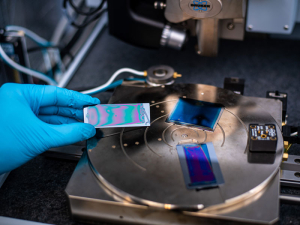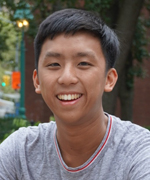For the summer of 2020, the Cullen College of Engineering had seven Biomedical Engineering students selected for the Summer Undergraduate Research Fellowship program.
The SURF program is open to sophomores, juniors and seniors that will be not be graduating in the year of the fellowship. A 3.0 GPA is required for full-time students, and only University of Houston main campus students are eligible.
As part of the program, students will attend a virtual lecture series. Students will also present at one of two Undergraduate Research Day events, currently planned for September 29, 2020 and April 1, 2021. Students are allowed to do research outside of their department for the program.
In their own words, here are what our students will be working on this summer.
Citlali Bataz (Dr. Muayyad Al-Ubaidi, Biomedical Engineering)
The project is a literature review on the use of telomerase in clinical research and macular degeneration gene therapies. Telomerase is a protein that extended the ends of the chromosomes. Dr. Al-Ubaidi's lab has a line of transgenic mice, Tert Rosa 26, that will express telomerase when given a drug called tamoxifen. I am looking into the possibility of using a mutation in the telomerase gene to extend the life of healthy photoreceptor cells in the retina. I would like to continue my research in the fall to test the time for telomerase expression in mice and study the retina's response to an increase in telomerase.
Nathan Cao (Dr. Oomman Varghese, Physics)
Semiconductor metal oxide sensors have picked up traction in the science community because of their ability to detect extremely low concentrations of volatile organic compounds (VOC) in air. Application of these sensors as a diagnostic tool for cancer are of interest because of their potential for early detection. However, since many VOCs are common to several diseases, sensors should distinguish the biomarker VOCs well for accurate diagnosis. I aim to apply pattern recognition techniques such as machine learning to a sensor array to characterize a mixture of VOCs representing different health/disease states.
Krishna Sarvani Desabhotla (Dr. Jose Contreras-Vidal, Electrical and Computer Engineering)
I'm working on the pediatric exoskeleton project in Dr. Contreras-Vidal's Noninvasive Brain-Machine Interface Systems Laboratory. The goal of this project is to develop a process of creating customizable pediatric exoskeletons that are quick, accurate, and cost-efficient. Finding the best way to create customized braces for these exoskeletons in the SolidWorks application from a 3D scan of an individual's lower limbs, made with the iSense scanner, is the topic of my research.
Abigail Janvier (Dr. Sheereen Majd, Biomedical Engineering)
The Blood-brain-barrier (BBB) is a layer of microvascular endothelial cells within brain capillaries that regulates the transport of molecules in and out of the brain. Unfortunately, this barrier poses an obstacle for therapeutic molecules to reach the brain, thus creating a need for realistic models of BBB in vitro that can represent the BBB in vivo. To target this necessity, the use of microfluidic devices in combination with brain capillary endothelial cells has proven to be a promising approach to mimic the key features of natural BBB. The focus of my summer research will be on the design and seamless incorporation of electrodes within the above-mentioned microdevice in Dr. Majd’s lab, which will be critical for TEER measurements.
Mariana Lopez Martinolich (Dr. Yingchun Zhang, Biomedical Engineering)
During my 10-week internship in the Zhang Lab, the primary focus of my research will be on the application of concurrent electroencephalography (EEG) and functional near infrared spectroscopy (fNIRS) in the assessment of the cortical reorganization that occurs during stroke rehabilitation. The Zhang lab is focused on the development and evaluation of portable, low-cost and noninvasive multimodal neuroimaging systems that could expand our understanding of the underlying mechanism for post-stroke functional recovery. This type of clinic-friendly neuroimaging systems will help identify valuable biomarkers for assessing motor function, monitoring motor function recovery, and predicting intervention outcomes for post-stroke patients, thereby maximizing the therapeutic effects of post-stroke rehabilitation protocols.
Dhriti Patel (Dr. Sheereen Majd, Biomedical Engineering)
My summer research project aims to develop a method for fabrication of alginate hydrogel encapsulating nanoliposomes. Following the formation of the alginate encapsulated nanoliposomes, I will be investigating the mechanical elasticity, size distribution, zeta potential and overall stability using the various testing methods provided in the lab.
Katherine Pham (Dr. Jinsook Roh, Biomedical Engineering)
Throughout the 10-week program, I will be exploring the characteristics of intermuscular coordination in healthy controls, versus stroke survivors, when performing isometric and dynamic reaching tasks utilizing electromyographic data. Through this work, I hope to employ the knowledge about bioelectrical signaling, human physiology and MatLab coding that I learned in class to investigate the muscle activation patterns related to motor impairments caused by stroke.







